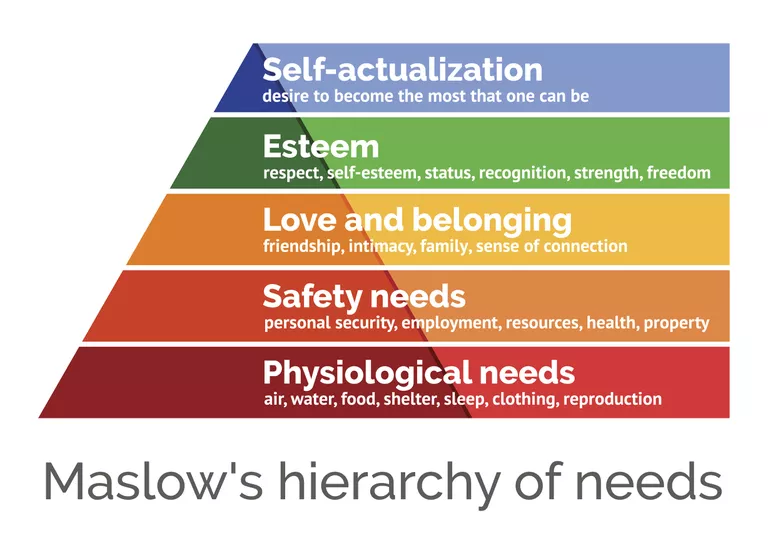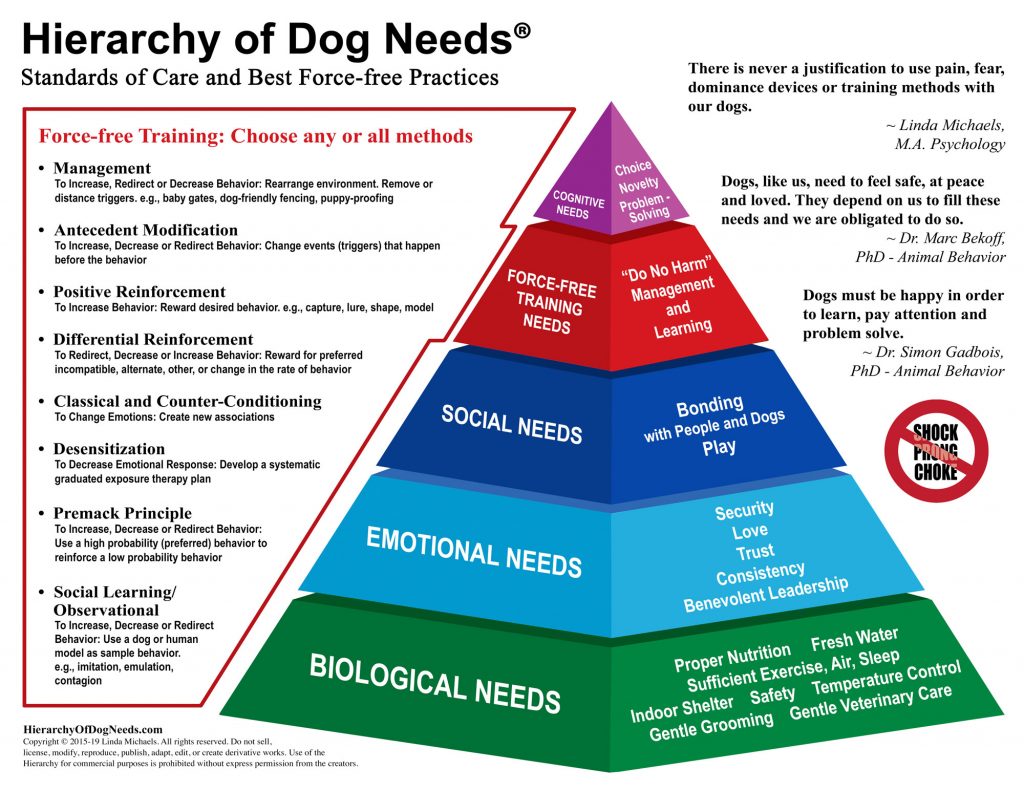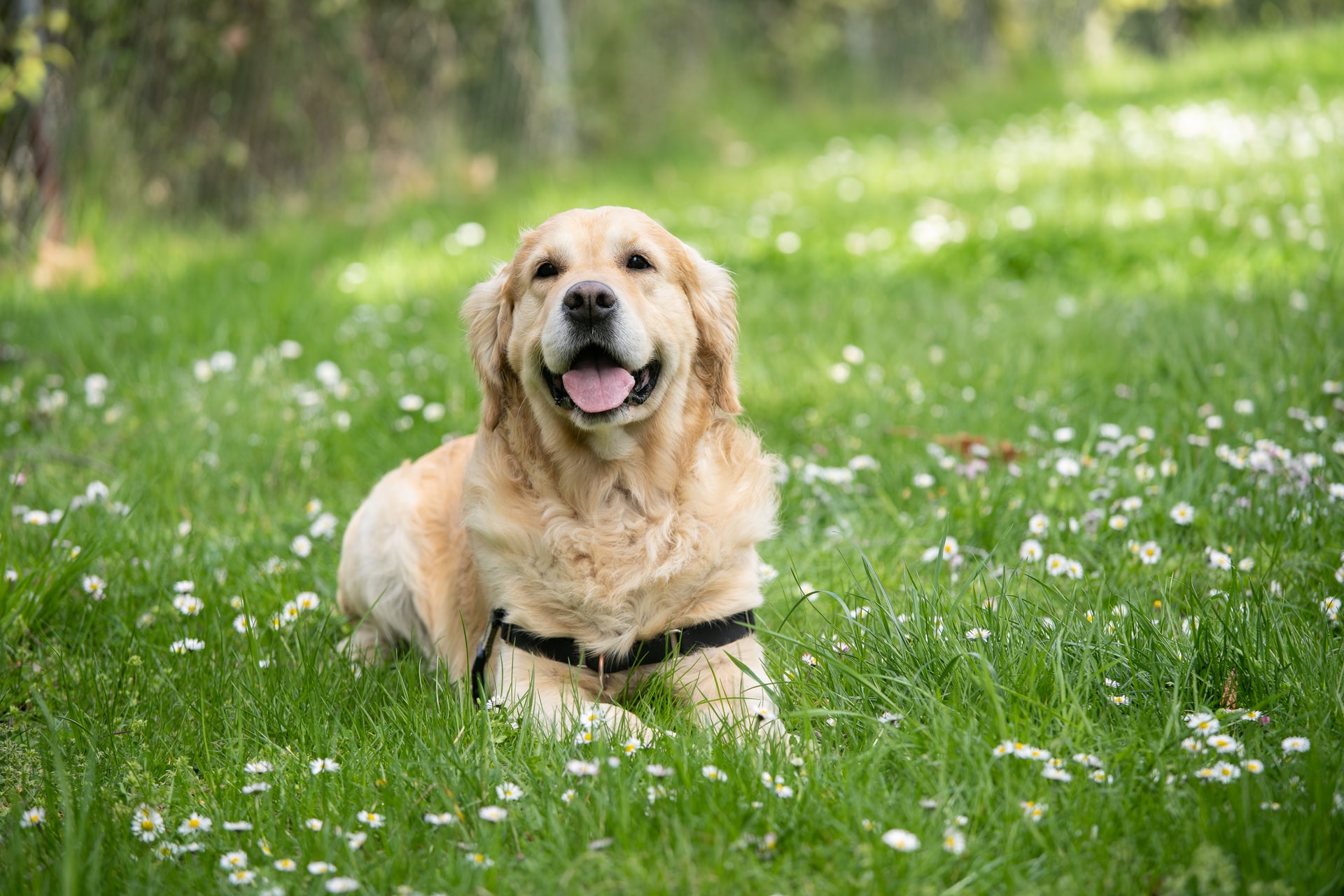Dogs, like humans, want to live a free-living and a happy life.
Dogs and humans co-exist because we benefit from each other. In modern society, due to our lifestyle, we’re forced to make choices that limit our dog’s free living life — tethering, crating our dogs, limited food choices, for example.
We, as dog parents, do things that make our dog happy every now and then. But those are short-lived. For example, offering our dogs an edible chew. The dog stays happy as long as the chew lasts.
But, as dog parents we intend our dogs to live happier throughout. “What can we do to make our dog live happier?”, might you ask. Well, you’re about to find out.
According to The Free Dictionary, “happiness” is a feeling of contentedness, pleasure or satisfaction.
Abraham Maslow, an American psychologist, was more interested in learning about what makes people happy and the things they do to achieve that happiness. Based on his learning, Maslow introduced the concept of hierarchy of needs.

According to his theory, higher needs in the hierarchy begin to emerge when people feel they have sufficiently satisfied (feeling contented with) the previous need. Whether the theory is praised or criticized is a topic for another day.
The following are the takeaways from Maslow’s hierarchy of needs —
- The higher one moves in the hierarchy, the happier one becomes.
- When there is contentedness with the existing needs, newer needs emerge.
- Happiness is a result of contentedness in all levels of hierarchy and not just one.
Your fascination with Maslow’s concept of hierarchy of needs could make you ask, “do we have a similar hierarchy of needs for dogs?”.
And the answer is yes.
Linda Michaels, a master’s degree holder in Experimental Psychology and a dog trainer, crafted a similar hierarchy for dogs called the “Hierarchy of Dog Needs“.

Linda Michael’s concept paved me a way to come up with a list of things we can do to make our dogs happier.
15 things you can do
You could be already doing some of these. Give yourself a pat in that case 🙂.
Meet your dog’s biological needs — the lower and the essential level of hierarchy.
- Ensure your dog’s nutrition through high quality meat. Oral anatomy of dogs indicate that dogs are primarily meat eaters. Proper nutrition leads to good health leading to a happier life. Follow Dr. Karen Becker to understand more about canine nutrition.
- Make fresh, clean water accessible to your dog 24×7.
- Train your dog to cooperate with grooming and veterinary care. Cooperation decreases human-dog conflicts. Thereby, making husbandry a win-win both for the dog and the human.
- Ensure your dog’s health with regular checkups with your veterinarian. Once every three months is ideal.
- Dog needs at least 30 minutes of acitivity every day. You can indulge your dog in — walking, jogging, running, hiking, swimming, agility training, scent training, trick training, playing a game of fetch, etc. Note that the activity should be fun for both you and your dog.
Once we meet the essential needs, we can move up the hierarchy meeting your dog’s emotional needs.
- We all love our dogs. But do we understand them? Humans being primates, express love by hugging, kissing, etc. Dogs, being non-primates, consider hugging, kissing threatening. To understand your dog, understand your dog’s body language. Susan Garrett, my mentor, has put together an acronym (T.E.M.P) to easily remember what to look for to interpret a dog’s body language.
- Like humans, dogs feel the need to be cared and loved. Shower your love and care like you always do.
- Build trust. When you interact with your dog, ask yourself, “Am I the giver of joy or the taker of joy?”. Always, be the giver of joy. Remember, building trust takes time.
- Stay consistent with your rules. For example, if you don’t want your adult dog to get on the furniture then don’t let your dog to get on the furniture when they are young. Consistency provides clarity and clarity reduces stress in dogs.
- Avoid unpredictability. Schedule meal times. Schedule play breaks. Schedule potty breaks. Be predictable with routines. I think you get the idea here.
Once we meet the emotional needs, we can move up the hierarchy meeting your dog’s social needs.
- Zazzie Todd, an animal behaviour expert, says that dog-human play is important to strengthen the bond. Use play to strengthen your relationship with your dog. Your relationship determines your dog’s compliance.
- Dogs feel the need to interact with other humans and animals (including dogs) positively. Provide an outlet when appropriate and considered safe.
You would appear very valuable to your dog when you meet their biological, emotional and social needs. Your dog would naturally love your presence. You can appear more valuable by training your dog.
- I consider training as a way to communicate with your dog. When you train, your dog learns to cooperate with you. You can teach your dog to earn their rewards by working with you rather than working against you.
- But any training won’t work. You should use force free methods to train. In other words, you should avoid training using punishments that induce physical pain.
- Lastly, increase challenges in training without breaking your dog’s confidence. Your dog will lose interest if you stay too long at a current challenge. Your dog will also lose interest if you raise your criteria too soon. Finding the sweet spot will help you and your dog strengthen your relationship even further.
I’ve been helping human — dog teams to communicate with each other, strengthen the bond and to become the best what they can be, since four years. If you want to take your relationship with your dog to a next level, hit me an email to tapthatbrain@gmail.com and I can help.
Image Credit
Photo by Angel Luciano on Unsplash

One response to “Make Your Dog Live Happier — 15 Things You Can Start Doing Today”
[…] more about how to keep dogs happier. So you can ask your breeder the right questions to know whether the mother and the pup were happy […]